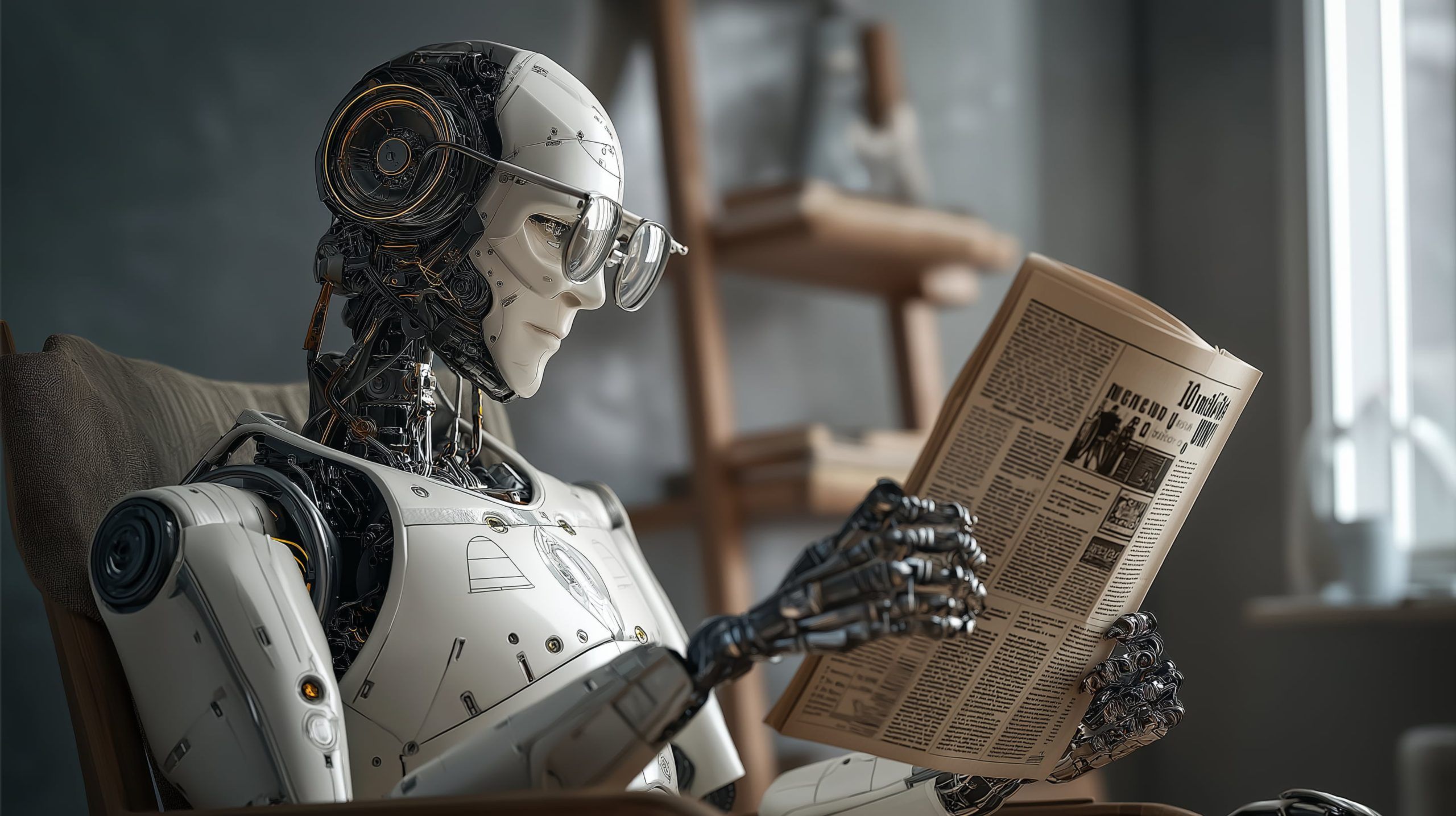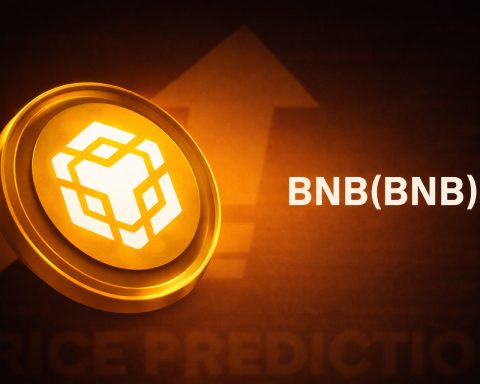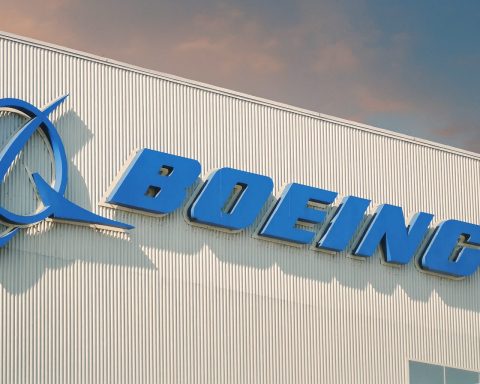- MolmoAct 7B, unveiled by Seattle’s Allen Institute for AI (Ai2), is a 7‑billion‑parameter open‑source model that lets robots plan 3D trajectories before execution and achieved 72%+ success on simulated benchmarks.
- Beijing‑based Zhipu AI released GLM‑4.5V, a 106B‑parameter open‑source visual reasoning model (12B active) with 64K context, 41 multimodal benchmarks, and 3D RoPE encoding, alongside a companion desktop assistant that analyzes your screen in real time.
- AI identified 12,000 archaeal antimicrobial peptides called archaeasins using the APEX tool on 230+ species, with 80 peptides tested showing a 93% inhibition rate against drug‑resistant bacteria.
- YouTube began a U.S. AI age‑gate pilot that flags likely under‑18 viewers from viewing habits, restricting minors to safety mode and allowing corrections via ID, credit card, or selfie.
- Anthropic announced Claude would be offered to U.S. federal agencies for $1 per agency, following recent clearances for OpenAI’s ChatGPT and Google Gemini for government use.
- Apple is testing a smarter Siri with cross‑app actions via an App Intents API, capable of editing photos and posting to apps, with a full debut planned for 2026.
- At SIGGRAPH 2025, NVIDIA introduced Cosmos Reason, a 7B vision‑language model for physical understanding and memory, Cosmos Transfer‑2 for faster synthetic data, plus a 3D reconstruction library and an Intel LLM‑Scaler 1.0 for multi‑GPU inference, with a full release targeted for Q4.
- Perplexity AI offered a $34.5B all‑cash bid to acquire Google’s Chrome, pledging to keep Chromium open‑source and invest $3B over two years, while promising no changes to Chrome’s default search engine and facing skepticism from analysts.
- Tesla canceled the Dojo AI supercomputer project, disbanding the Dojo team and calling Dojo 2 an evolutionary dead end, shifting resources to AI5/AI6 chips from TSMC and Samsung for FSD and robotaxis.
- Apollo Hospitals in India said it will double its AI investment over 2–3 years to expand AI in diagnostics, including an AI tool to predict liver fibrosis risk, aided by a Microsoft partnership and aided by rising patient volumes.
Over the past two days, the global AI arena has seen a whirlwind of breakthroughs, blockbuster deals, policy twists and market swings. From billion-dollar takeover bids and open-sourced supermodels to government crackdowns and ethical debates, here’s a comprehensive roundup of the major AI developments from August 12–13, 2025.
Major Research Breakthroughs
- Robots that “Think” Before They Act: Seattle’s Allen Institute for AI (Ai2) unveiled MolmoAct 7B, a new open-source AI model that lets robots plan movements in 3D before executing them [1] [2]. Described as an “action reasoning” model, MolmoAct takes in high-level instructions (e.g. “pick up the cup and put it in the sink”) and internally maps out a step-by-step trajectory in a virtual 3D space [3] [4]. “With MolmoAct, we’re not just releasing a model; we’re laying the groundwork for a new era of AI, bringing the intelligence of powerful AI models into the physical world,” said Ai2 CEO Ali Farhadi [5]. The model (7 billion parameters) was trained on thousands of real-world “robot episodes” (like kitchen and bedroom tasks) and achieved state-of-the-art success rates (72%+) on simulated benchmarks [6]. Uniquely, it’s fully open-source (code, data and weights) to boost transparency and allow developers to preview and tweak the robot’s planned motions before execution [7] [8] – an answer to the “black box” problem in AI-driven robotics.
- China Open-Sources a Vision AI Powerhouse: Beijing-based Zhipu AI released GLM-4.5V, touted as “the best-performing open-source visual reasoning model at the 100B scale globally” [9]. With 106 billion parameters (12B active) built on their flagship GLM-4.5 model, it dominates 41 multimodal benchmarks, from image and video understanding to chart analysis and even GUI tasks [10]. GLM-4.5V’s “thinking mode” allows a choice between rapid answers or deeper reasoning [11]. It can ingest images/videos (supporting 64K context) and even handle complex 3D spatial reasoning thanks to custom techniques like 3D RoPE encoding [12]. Significantly, Zhipu open-sourced the model on platforms like HuggingFace, aligning with China’s push toward transparent AI. They also released a companion desktop assistant that uses GLM-4.5V to analyze your screen in real time for tasks like coding help, video analysis or UI automation [13]. This marks “another important… achievement on [Zhipu’s] path toward AGI”, the company stated, underscoring Asia’s growing presence in cutting-edge AI R&D [14].
- AI Unearths New Antibiotics: In a leap for healthcare, researchers harnessed AI to discover a new class of antibiotic molecules from ancient microbes. A team at University of Pennsylvania used a deep learning tool (APEX) to scan proteins from 230+ species of Archaea – primordial organisms that thrive in extreme environments [15] [16]. The AI identified over 12,000 promising antimicrobial peptides dubbed “archaeasins” [17]. Lab tests on 80 of these peptides showed a remarkable 93% success rate in inhibiting drug-resistant bacteria [18]. Even more intriguing, archaeasins attack bacteria in a novel way: instead of punching holes in cell membranes (like typical antibiotics), they disrupt the microbes’ internal electrical signals, essentially “incapacitat[ing] bacteria from within” [19]. Early animal trials found several archaeasins could clear tough infections, hinting at potential new drugs to fight superbugs. This AI-driven pipeline dramatically accelerates antibiotic discovery – a timely breakthrough amid rising antimicrobial resistance.
New Product Launches & Tech Updates
- YouTube’s AI Age Gate: Google’s YouTube began testing an AI-powered age verification system in the U.S. to automatically distinguish adults from teens based on viewing habits [20]. The pilot, rolling out to a subset of users, uses machine learning to analyze what logged-in viewers watch and flags likely under-18 users (regardless of the birthdate on their account) [21] [22]. Those flagged as minors will be restricted to YouTube’s existing safety mode – with limits on mature content, no personalized ads, and prompts for screen breaks [23]. If the AI gets it wrong, users can “correct” their age by submitting ID, a credit card, or a selfie for verification [24]. “YouTube was one of the first platforms to offer experiences designed specifically for young people, and we’re proud to again be at the forefront… delivering safety protections while preserving teen privacy,” said James Beser, YouTube’s director of product management [25]. The move comes as new laws (like a recent U.S. Supreme Court–upheld Texas law) are pressuring platforms to shield kids from harmful content [26]. However, digital rights groups (EFF, CDT) caution that such age checks could compromise privacy and free speech online [27], sparking a broader debate about how to balance child safety and user anonymity.
- Anthropic’s $1 AI for Government: In an aggressive bid to court public sector clients, Anthropic (maker of the Claude chatbot) announced it will offer its AI model to the U.S. government for just $1 [28]. The token price applies to federal agencies as Anthropic joins a growing list of startups practically giving away AI services to win lucrative government contracts. “America’s AI leadership requires that our government institutions have access to the most capable, secure AI tools available,” CEO Dario Amodei said, framing the offer as patriotic support [29]. This comes just days after the U.S. cleared OpenAI’s ChatGPT, Google’s Gemini, and Anthropic’s own Claude for use by federal agencies [30]. (OpenAI similarly offered ChatGPT Enterprise to agencies at $1 per agency for the next year [31].) By virtually zero-pricing their AI, companies hope to become the default providers when government adoption of AI scales up – effectively a foot-in-the-door strategy for future multi-million-dollar deals.
- Apple Tests a Smarter Siri: Apple is quietly piloting a next-generation Siri that can perform cross-app actions via voice – one of the voice assistant’s biggest upgrades in years [32]. Early tests show Siri editing photos, posting to social media apps, and executing multi-step tasks on command. Apple has opened select capabilities to developers through an “App Intents” API to deepen Siri’s integration with third-party apps [33]. This smarter Siri is part of Apple’s efforts to catch up in the AI assistant race (as rivals embed advanced generative AI into their products). However, insiders say the fully revamped Siri won’t debut until 2026 [34], as Apple methodically works out privacy and accuracy challenges. For now, limited trials with partners like Uber and WhatsApp are underway to fine-tune Siri’s new tricks before a broader release.
- NVIDIA & Intel Turbocharge AI Developers: At the SIGGRAPH 2025 conference, NVIDIA unveiled a suite of tools to accelerate AI in the physical world [35]. Headlining the announcements was Cosmos Reason, a 7-billion-parameter vision-language model built to imbue robots and AI agents with human-like “physical understanding and memory.” NVIDIA also rolled out Cosmos Transfer-2, a system to generate synthetic training data faster, plus a 3D reconstruction library for simulating real-world scenes [36]. The new models and tools will integrate into popular open-source robotics platforms (like CARLA), promising to make training autonomous vehicles and robots more efficient. Meanwhile, Intel launched LLM-Scaler 1.0, a software tool to boost large-model inference performance on its GPUs [37]. The containerized package enables multi-GPU scaling, better memory management (via vLLM) and peer-to-peer GPU communication – squeezing more AI bang out of each Intel Arc processor. A full release is expected by Q4 [38], aiming to help Intel compete in an AI chip market dominated by NVIDIA.
(No major consumer AI gadget launches occurred in the past two days, but last week notably saw OpenAI release GPT-5, its new flagship model. That rollout – powering a more agentive ChatGPT capable of handling tasks like coding apps or managing calendars – continues to ripple through the AI world, even as newer updates above took center stage this week [39] [40].)
Corporate Announcements & Moves in AI
- $34.5 Billion Bid for Google’s Chrome: In a bold and unusual move, AI startup Perplexity AI made an unsolicited $34.5 billion all-cash offer to acquire Google’s Chrome web browser [41]. Perplexity, a three-year-old AI search company run by Aravind Srinivas, is tiny compared to Chrome’s 3+ billion user base – its last valuation was $14 billion [42] [43] – yet it’s reaching for the crown jewel of web browsers. The startup argues that owning Chrome would give it an immense user pool and data advantage in the AI-powered search race [44]. (Perplexity already offers an AI-centric browser called Comet, and notably tried a headline-grabbing merger offer for TikTok’s U.S. arm earlier this year [45].) Google has not put Chrome up for sale – the bid comes as a U.S. antitrust court last year ruled Google’s search monopoly illegal and regulators have floated forcing Google to divest Chrome [46]. Perplexity’s term sheet, seen by Reuters, pledges to keep Chrome’s underlying Chromium code open-source and invest $3 billion over two years to improve the browser [47] [48]. It also promises no changes to Chrome’s default search engine (Google) to ease antitrust concerns [49]. While multiple investors have offered to finance the deal [50], analysts are skeptical. Google is highly unlikely to sell Chrome voluntarily, and any forced sale would face years of appeals. “Judge Mehta… could hold off on requiring a sale until the appeals process is worked out… that could run for a couple of years,” noted antitrust expert Herbert Hovenkamp [51]. One rival CEO estimated Chrome could fetch $50 billion if it ever hit the market [52], making Perplexity’s bid look more like a PR stunt – albeit one that signals how crucial browsers have become in the AI era. (Notably, Alphabet’s stock ticked up ~1.6% on the Chrome bid news [53], as investors weighed the chance of a multibillion-dollar asset sale.)
- Tesla Kills “Dojo” Supercomputer Project: In a surprise pivot, Elon Musk pulled the plug on Tesla’s ambitious “Dojo” AI supercomputer program, just weeks after touting plans for its next phase [54] [55]. Musk confirmed that Tesla has disbanded the Dojo team – and its lead architect has left – calling the second-gen Dojo 2 cluster “an evolutionary dead end.” “Once it became clear that all paths converged to AI6, I had to shut down Dojo… as Dojo 2 was now an evolutionary dead end,” Musk posted on X [56]. Dojo was Tesla’s in-house effort to build a custom AI training supercomputer (with proprietary D1 chips) to power its self-driving car algorithms and humanoid robots [57]. Now Tesla will shift to a strategy centered on its upcoming AI5 and AI6 chips (manufactured by TSMC and Samsung) and large clusters of those chips instead [58] [59]. Musk admitted it “doesn’t make sense for Tesla to divide its resources” between two different AI hardware approaches [60] – a concession that even the world’s richest carmaker has limits in the AI compute arms race. The shutdown comes as Tesla faces slumping EV sales and needs to reassure investors of progress in autonomy. By redeploying Dojo resources into AI5/AI6, Tesla hopes to streamline its path to full self-driving (FSD) and robotaxis using more off-the-shelf tech. Still, the U-turn raises eyebrows since Musk had long hyped Dojo as critical to Tesla’s AI mastery; insiders say talent retention was an issue, with some Dojo engineers decamping to startups. The move underscores how rapidly the competitive landscape in AI hardware can shift – and the brutal choices companies must make on big R&D bets.
- Hospitals Double Down on AI: In India, one of the country’s largest private hospital chains, Apollo Hospitals, announced it will double its investment in AI over the next 2–3 years [61]. Apollo’s CEO Madhu Sasidhar said the healthcare group is expanding its already extensive use of AI in diagnostics – where AI reads X-rays, scans, and even assists in endoscopic exams for doctors [62]. Recently Apollo developed an AI tool to analyze routine scan reports and predict patients’ risk of liver fibrosis in the future [63]. “We are… bringing some other new generation agentic AI-type tools,” Sasidhar noted, hinting at upcoming AI-driven healthcare services [64]. Apollo (based in Chennai) earlier partnered with Microsoft to co-develop medical AI solutions, some of which are now in pilot testing [65]. The chain’s earnings underscore why they’re bullish on AI: Apollo just beat profit estimates on surging patient volumes [66]. Many Indian hospital groups, mirroring Western counterparts, see AI as key to improving diagnostics, personalized treatments and operational efficiency in a vast, underserved healthcare market. Apollo’s planned investment surge signals that AI health tech is moving from trial phase to core strategy, in Asia’s third-largest economy.
- Other Noteworthy Moves: AI continues to shake up corporate strategies worldwide. For example, Infobip, a cloud messaging leader in Southeast Europe, announced a major AI push in its customer experience offerings (branding AI as the “new standard” for CX in Asia-Pacific) [67]. And in South Korea, startup Datumo raised $15.5 million to help enterprises build safer generative AI, reflecting growing investor interest in AI safety and compliance tools [68]. Meanwhile, chipmakers like NVIDIA and AMD found themselves in an unusual position – negotiating with the White House (see Policy section below) – illustrating how national policy can suddenly influence corporate plans in the AI supply chain.
Policy & Regulation Updates
- US Lets AI Chips Flow to China – For a Price: A shock move from Washington this week blurred the line between national security and deal-making. U.S. President Donald Trump struck an unprecedented deal with chip giant NVIDIA to allow exports of its high-end AI processors to China – in exchange for the U.S. government taking a 15% cut of the revenue from those China sales [69] [70]. Trump’s offer effectively creates a “pay-to-play” exception to last year’s export ban on NVIDIA’s A100/H20 chips (which are crucial for training advanced AI models) [71] [72]. Historically, if a technology was deemed too sensitive, U.S. export controls made it outright off-limits. Now, companies might “buy their way” around such bans by sharing profits with Uncle Sam – a radical departure from past policy [73] [74]. Lawmakers from both parties swiftly blasted the arrangement: “By putting a price on our security concerns, we signal to China and our allies that American national security principles are negotiable for the right fee,” warned Rep. Raja Krishnamoorthi, the House China Committee’s ranking Democrat [75]. Republican Rep. John Moolenaar likewise cautioned against “set[ting] a precedent that incentivizes [companies] to… sell China technology that will enhance its AI capabilities” [76]. Analysts, too, are uneasy – Bernstein Research said this “feels like a slippery slope”, potentially cutting chipmakers’ margins by 5–15 points on Chinese sales and inviting similar deals for other critical tech exports [77] [78]. NVIDIA hasn’t commented in detail beyond saying it follows U.S. rules [79] (and noting it hasn’t shipped the banned H20 chips to China for months) [80]. The legality of Trump’s revenue-skimming scheme is also in question – some experts say it “sure looks like an export tax”, which might violate the Constitution [81] [82]. For now, the administration insists the chips allowed (including a possibly “scaled-down” Blackwell GPU) aren’t a serious security risk [83]. But this ad-hoc deal signals a new era of highly politicized tech commerce, with AI chips caught in the middle of U.S.-China tensions. Other nations will be watching closely as the U.S. redefines its playbook on tech restrictions in real time.
- EU Turns to Industry for AI Guardrails: Across the Atlantic, Europe is pressing ahead with its landmark AI Act – and enlisting big tech’s help. Google confirmed it will sign onto the EU’s voluntary “AI Code of Practice” aimed at meeting the Act’s requirements [84] [85]. This code, drafted by experts, asks AI providers to preemptively comply with likely rules – such as disclosing the data used to train AI models and respecting European copyright – even before the law takes effect [86]. Google’s global affairs president Kent Walker said the company signs on “with the hope that this code… will promote European citizens’ and businesses’ access to secure, first-rate AI tools” [87]. However, he also voiced concern that overly strict rules (e.g. requiring revealing trade secrets or onerous approvals) “could chill European model development… harming Europe’s competitiveness” [88]. Microsoft has signaled it will likely join the code as well [89], while Meta (Facebook) has declined, citing legal uncertainties. The EU’s approach – voluntary at first, binding later – is being closely watched as a model for governing AI. It reflects Europe’s attempt to set a global benchmark for “trustworthy AI” governance [90], balancing innovation with oversight. In the meantime, the AI Act itself continues through final negotiations, expected to impose obligations like risk labeling on AI systems and restrictions on practices like biometric surveillance. As companies scramble to shape the coming rules, Europe is clearly signaling that the era of “move fast and break things” in AI is over – at least on its shores.
(No major new laws were enacted in the past two days, but these moves – the U.S. brokering export exceptions and the EU’s voluntary code – highlight how policymakers are improvising new tools to rein in (or leverage) AI. Other policy notes: the UK is confronting an energy reality check as it aims to be an AI hub, with reports that Britain’s lofty AI ambitions could falter due to very high electricity costs for data centers [91] [92]. And in the U.S., a new Senate panel on AI continues to hold hearings, weighing regulations on AI transparency and safety amid pressure to act before generative AI proliferates even further.)
Ethical, Social & Legal Debates
- Musk vs. Apple – App Store Antitrust Fight: An X (formerly Twitter) spat between tech titans this week underscored brewing antitrust questions in the AI app ecosystem. Elon Musk accused Apple of unfairly boosting OpenAI’s ChatGPT in the App Store at the expense of rivals – including Musk’s own AI efforts. “Apple is behaving in a manner that makes it impossible for any AI company besides OpenAI to reach #1 in the App Store, which is an unequivocal antitrust violation. xAI will take immediate legal action,” Musk posted, vowing to sue Apple [93] [94]. He claimed that ChatGPT’s app (which Apple recently partnered to integrate into iPhones and Macs) has been artificially cemented at the top of the charts, while his products – the X app and Grok chatbot – are allegedly kept out of Apple’s featured “Must Have” section despite strong download ranks [95] [96]. Sam Altman, OpenAI’s CEO, fired back at Musk’s allegations as “remarkable… given what I have heard alleged that Elon does to manipulate X to benefit himself” [97], pointing out that other AI apps have hit #1 (e.g. a Chinese app DeepSeek in January, and Perplexity’s app in India in July) even after Apple’s OpenAI deal [98]. Apple has not commented, and Musk provided no hard evidence of App Store meddling [99]. The feud comes as regulators worldwide eye Apple’s control over its App Store – just this year the EU fined Apple €500 million for restricting app developers, a decision highlighting Apple’s gatekeeper power [100]. Musk’s gripe adds an AI twist to those concerns: if platform owners favor certain AI partners, it could stifle competition in this fast-growing market. Legal experts note Musk’s case may be thin without proof of explicit ranking manipulation, but the situation illustrates the broader ethical debate about platform neutrality in the age of AI. For consumers and developers, the question is whether algorithmic app rankings (and editorial sections like “Must Have”) are truly merit-based or subject to behind-the-scenes influence – a transparency issue Apple may now face pressure to address.
- Child Safety vs. Privacy Online: The rollout of AI age verification on YouTube is reigniting the perennial debate over online privacy and censorship. Advocates hail systems like YouTube’s new AI age-estimator as necessary to protect kids from pornography, violence, and other harmful content – especially after court decisions like the U.S. Supreme Court upholding Texas’s strict age-verification law for adult sites [101]. They argue tech platforms have long failed at policing underage access, and smarter AI filters could succeed where self-reported birthdays and flimsy ID checks did not. On the other side, digital rights groups warn that how these AI systems infer age (by monitoring one’s viewing history) creeps into surveillance territory. The Electronic Frontier Foundation (EFF) and others fear that demanding government IDs or biometrics from users to prove age undermines anonymous speech and could chill access to perfectly legal content (as adults may balk at scanning their face or ID for a YouTube video) [102]. There are also concerns about AI accuracy and bias – will the algorithm wrongly flag certain innocent viewing patterns as “underage,” or could it be less accurate for some demographics? If mistakes occur, users might get locked out of content unjustly, or be forced to submit sensitive documents to private companies, raising data security questions. In essence, what’s at stake is trust: trust in platforms to wield AI content filters responsibly, and trust in governments not to overreach under the guise of child safety. The coming months in the U.S. will be a testing ground, both technically (how well YouTube’s pilot works) and legally (as more states consider age-verification laws). Similar debates are unfolding in the UK and EU with their online safety regulations. The balance struck will set a precedent for how AI mediates our access to information – and whether we can remain anonymous while surfing the post-AI web.
- Artists and Authors Sound Off on AI: (No singular headline event on Aug 12–13, but an ongoing backdrop:) The creative community’s unease with generative AI reached a boiling point this summer, leading to lawsuits and protests that continued this week. Notably, major U.S. writers’ organizations have been lobbying Congress, arguing that AI companies training on copyrighted books without permission are engaging in massive theft of intellectual property. Visual artists, too, have filed class-action suits against image generators for scraping their artworks. On the ethical front, questions arose about AI’s role in entertainment after it was revealed that some Hollywood studios planned to use AI-generated background actors – a flashpoint in the recent actors’ strike negotiations. While no new legal decisions hit in the last two days, AI ethics was a hot topic at tech conferences: who gets to profit from AI creations built on the collective output of humanity? The conversation is pushing tech firms toward new tools (like “opt-out” tags for creators’ content and paid licensing deals for datasets) and has spurred at least one U.S. Senate proposal to exempt AI outputs from copyright if they’re trained on public data. As AI’s social license is debated, expect to see more public blowback against AI “cloning” of human creativity – and perhaps the first court rulings that draw lines on fair use and compensation in the generative AI era.
Market Reactions & Investment Activity
AI news continues to move markets at a frenetic pace, with investors both piling in and taking profits as developments unfold:
- CoreWeave’s Hot Demand, Cold Cashflow:CoreWeave, a fast-rising cloud provider specializing in AI infrastructure, reported sizzling revenue growth but still managed to spook Wall Street. In its Q2 earnings on Aug 12, CoreWeave posted $1.21 billion in revenue – topping forecasts – thanks to “rapid adoption of AI” driving huge demand for its GPU cloud services [103] [104]. (The startup operates 30+ AI data centers and offers sought-after NVIDIA chips to enterprises training large models [105] [106].) It also revealed a massive $30 billion backlog of orders, up 16% in just one quarter [107], signaling red-hot future demand. “Demand is humming,” said analyst Michael Ashley Schulman, “but it is the cost of growth that tempered the stock down in aftermarket trading.” [108] Indeed, CoreWeave’s operating expenses ballooned nearly 4× to $1.19 billion for the quarter [109]. The company’s net loss swelled to $290 million, far worse than expected [110]. The culprit: enormous investments in capacity (and likely higher chip prices amid the AI boom) eating into margins. CoreWeave’s stock, which IPO’d in March, fell ~10% after hours on the earnings news [111]. Still, many analysts remain upbeat – one noted the $30B backlog “suggests demand visibility well beyond 2025”, though concentrated big customers (like OpenAI) pose a “single point of failure” risk if any pull back [112]. CoreWeave itself says its biggest challenge now is securing enough power and cooling infrastructure (“power shells”) to keep expanding its data centers [113]. The takeaway: the AI gold rush is real for suppliers like CoreWeave, but scaling at breakneck speed comes with growing pains that investors will be monitoring closely (especially as competitors like AWS and Google Cloud ramp up their AI offerings).
- Stocks Sway on AI Hopes and Jitters: Broader markets reacted to this week’s AI news in varied ways. The S&P 500 notched a modest rally on Aug 12, partially on relief that U.S. inflation data was benign, but also amid optimism around the AI sector’s resilience [114]. Traders on Wall Street specifically buzzed over the possibility of Google offloading Chrome (an asset that could fetch tens of billions) and the implications of Anthropic’s government push – reading those as signals that big money is flowing into AI opportunities [115]. Tech-heavy indices rose slightly, and Big Tech shares (Alphabet, Amazon, Microsoft) were generally green. NVIDIA’s stock, which has quintupled over the past year on AI chip demand, initially jumped on the news of Trump’s China deal – since resuming some China sales could boost short-term revenue. But it flattened out as analysts digested the longer-term margin hit from the 15% fee and the precedent it sets. Conversely, shares of Chinese tech firms and data center operators popped higher in Hong Kong, as the NVIDIA deal raised hopes that the U.S. might ease other AI tech restrictions. Over in Europe, semiconductor firms and AI software startups are watching nervously how the U.S.-China chip detente plays out; any escalation or reversal could whipsaw supply chains again.
- Venture Capital & IPOs: Investment in AI startups remains frenzied. Alongside Datumo’s funding in Korea, other notable raises this week included an enterprise AI security firm in Israel securing $40 million (as cybersecurity + AI is a hot combo), and a California-based generative video startup raising $25 million at a $300M valuation, betting it can automate video creation with GPT-5-level models. Meanwhile, the ripple effects of AI are hitting IPO markets: on Aug 13, the CoinDesk crypto exchange’s parent (which has pivoted to use AI in trading) priced its U.S. IPO above range to raise $1.1 billion [116], a positive sign that AI-adjacent growth stories can overcome an otherwise tepid market for new listings. In public markets, AI-linked stocks (from chipmakers to software firms) are experiencing increased volatility as traders chase any scrap of news. But some analysts urge caution: with AI headlines driving rapid sentiment swings, there is potential for “bubble” dynamics if earnings don’t catch up to lofty expectations. Still, for now the fear of missing out is prevalent – evidenced by the outsized attention on small-cap AI firms’ earnings and the willingness of investors to reward even speculative AI bids (as seen by Alphabet’s stock uptick on the Chrome drama).
Sources: Official news releases, expert commentary and media reports were used in compiling this roundup. Key references include Reuters [117] [118] [119], Associated Press [120] [121], TechCrunch [122] [123], and others as cited above. These sources provide further details on each development for those interested in a deeper dive.
References
1. siliconangle.com, 2. siliconangle.com, 3. siliconangle.com, 4. siliconangle.com, 5. siliconangle.com, 6. siliconangle.com, 7. siliconangle.com, 8. siliconangle.com, 9. news.aibase.com, 10. news.aibase.com, 11. news.aibase.com, 12. news.aibase.com, 13. news.aibase.com, 14. news.aibase.com, 15. bioengineer.org, 16. bioengineer.org, 17. bioengineer.org, 18. bioengineer.org, 19. bioengineer.org, 20. abcnews.go.com, 21. abcnews.go.com, 22. abcnews.go.com, 23. abcnews.go.com, 24. abcnews.go.com, 25. abcnews.go.com, 26. abcnews.go.com, 27. abcnews.go.com, 28. www.reuters.com, 29. www.reuters.com, 30. www.reuters.com, 31. www.reuters.com, 32. news.aibase.com, 33. news.aibase.com, 34. news.aibase.com, 35. news.aibase.com, 36. news.aibase.com, 37. news.aibase.com, 38. news.aibase.com, 39. techcrunch.com, 40. techcrunch.com, 41. www.reuters.com, 42. www.reuters.com, 43. www.reuters.com, 44. www.reuters.com, 45. www.reuters.com, 46. www.reuters.com, 47. www.reuters.com, 48. www.reuters.com, 49. www.reuters.com, 50. www.reuters.com, 51. www.reuters.com, 52. www.reuters.com, 53. www.reuters.com, 54. techcrunch.com, 55. techcrunch.com, 56. techcrunch.com, 57. techcrunch.com, 58. techcrunch.com, 59. techcrunch.com, 60. techcrunch.com, 61. www.reuters.com, 62. www.reuters.com, 63. www.reuters.com, 64. www.reuters.com, 65. www.reuters.com, 66. www.reuters.com, 67. www.prnewswire.com, 68. news.aibase.com, 69. www.reuters.com, 70. www.reuters.com, 71. www.reuters.com, 72. www.reuters.com, 73. www.reuters.com, 74. www.reuters.com, 75. www.reuters.com, 76. www.reuters.com, 77. www.reuters.com, 78. www.reuters.com, 79. www.reuters.com, 80. www.reuters.com, 81. www.reuters.com, 82. www.reuters.com, 83. www.reuters.com, 84. www.reuters.com, 85. www.reuters.com, 86. www.reuters.com, 87. www.reuters.com, 88. www.reuters.com, 89. www.reuters.com, 90. www.reuters.com, 91. www.reuters.com, 92. www.reuters.com, 93. www.reuters.com, 94. www.reuters.com, 95. www.reuters.com, 96. www.reuters.com, 97. www.reuters.com, 98. www.reuters.com, 99. www.reuters.com, 100. www.reuters.com, 101. abcnews.go.com, 102. abcnews.go.com, 103. www.reuters.com, 104. www.reuters.com, 105. www.reuters.com, 106. www.reuters.com, 107. www.reuters.com, 108. www.reuters.com, 109. www.reuters.com, 110. www.reuters.com, 111. www.reuters.com, 112. www.reuters.com, 113. www.reuters.com, 114. www.tastylive.com, 115. www.tastylive.com, 116. www.reuters.com, 117. www.reuters.com, 118. www.reuters.com, 119. www.reuters.com, 120. abcnews.go.com, 121. abcnews.go.com, 122. siliconangle.com, 123. techcrunch.com










